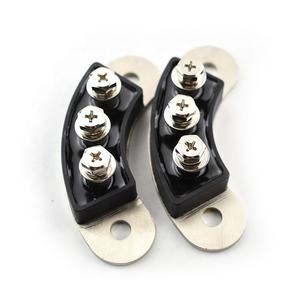Thyristors Online | High-Quality Power Semiconductors
**”Unlocking the Secrets of Thyristors: A Hands-On Guide with Multimeters”**
(Thyristor Assessment with Multimeters: Practical Testing Approaches)
Thyristors, those tiny yet mighty semiconductor devices, are the unsung heroes of modern electronics. They silently control power in everything from dimmer switches to massive industrial machines. But how do you know if your thyristor is up to the task? Enter the trusty multimeter—a tool that can reveal the secrets of these components with just a few probes and a bit of know-how. In this blog, we’ll dive into the practical art of testing thyristors, turning what might seem like a dry technical task into an exciting exploration of electronics.
First, let’s set the stage. A thyristor is like a gatekeeper for electrical current. It allows power to flow in one direction but blocks it in the other, and once triggered, it stays on until the current drops below a certain level. This makes it perfect for controlling high-power circuits. But like any gatekeeper, it can fail—and when it does, the results can be catastrophic. That’s where your multimeter comes in. It’s not just a tool; it’s your detective kit for uncovering the truth about your thyristor’s health.
To begin, you’ll need to understand the basic anatomy of a thyristor. It has three terminals: the anode, the cathode, and the gate. The anode and cathode are the main players, controlling the flow of current, while the gate is the trigger that sets everything in motion. Testing a thyristor involves checking the connections between these terminals to ensure they’re functioning as they should.
Start by setting your multimeter to the diode test mode. This mode sends a small current through the component and measures the voltage drop, giving you a clear picture of how the thyristor behaves. Place the positive probe on the anode and the negative probe on the cathode. A healthy thyristor will show a high resistance, meaning it’s blocking current as it should. If you see a low resistance, it’s a red flag—your thyristor might be shorted and unable to do its job.
Next, it’s time to test the gate. This is where things get interesting. With the positive probe still on the anode, touch the negative probe to the gate. If the thyristor is working properly, you’ll see a drop in resistance, indicating that the gate has triggered the device. Now, remove the probe from the gate and check the resistance between the anode and cathode again. If the resistance stays low, congratulations—your thyristor is alive and kicking! If it jumps back to a high resistance, the thyristor might be faulty or not receiving enough current to stay triggered.
But wait, there’s more! Some thyristors are designed to handle alternating current (AC), which adds another layer of complexity. In these cases, you’ll need to test the device under both positive and negative voltage conditions to ensure it can handle the full range of its intended operation. This is where your multimeter’s versatility truly shines, allowing you to simulate real-world conditions and uncover any hidden weaknesses.
(Thyristor Assessment with Multimeters: Practical Testing Approaches)
Testing thyristors with a multimeter might sound like a mundane task, but in reality, it’s a thrilling journey into the heart of electronics. Each probe touch is a step closer to understanding the inner workings of these powerful devices. So grab your multimeter, roll up your sleeves, and start exploring. Who knows what secrets your thyristors are hiding? With a little patience and curiosity, you’ll unlock their full potential and keep your circuits running smoothly. Happy testing!


